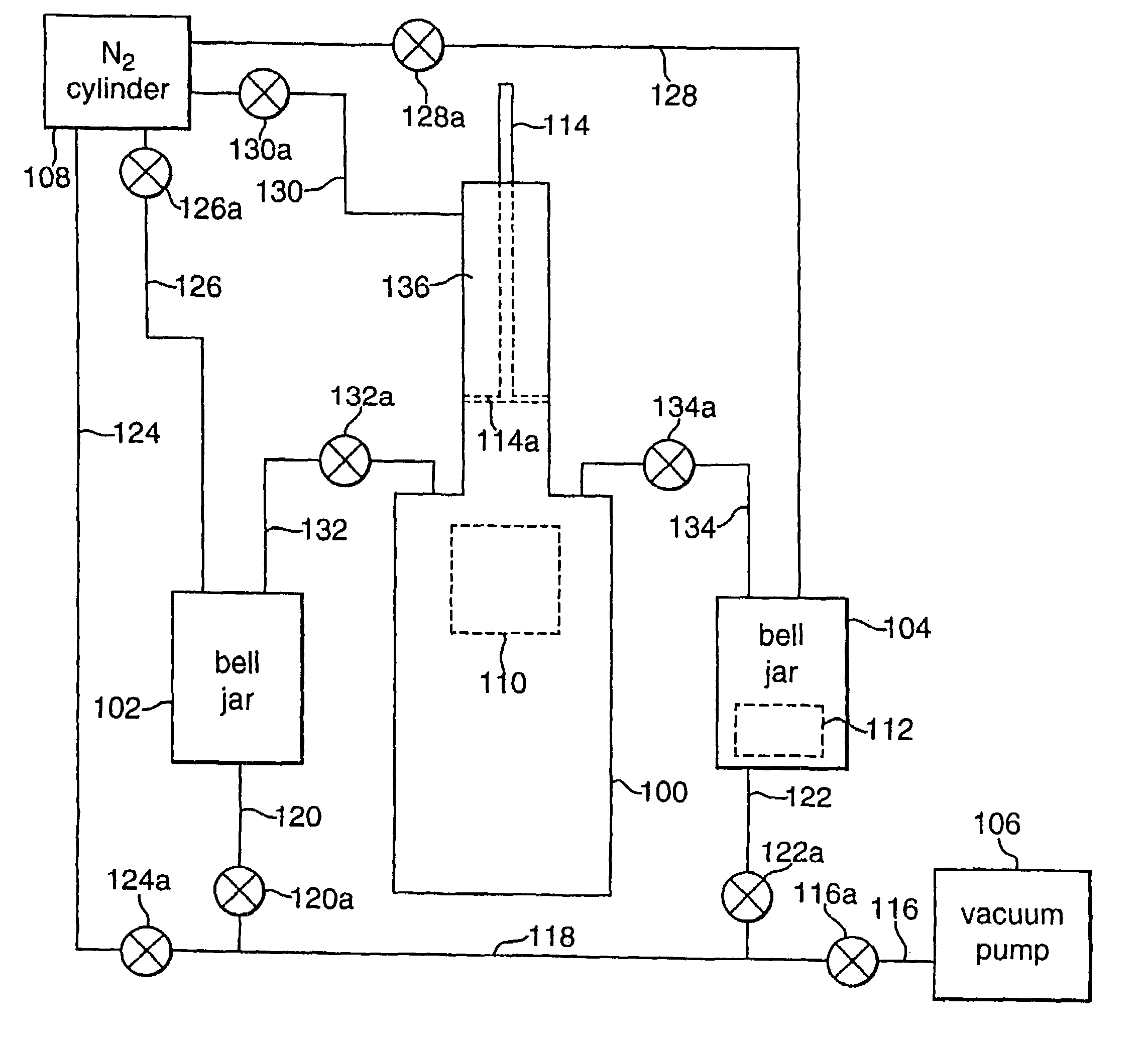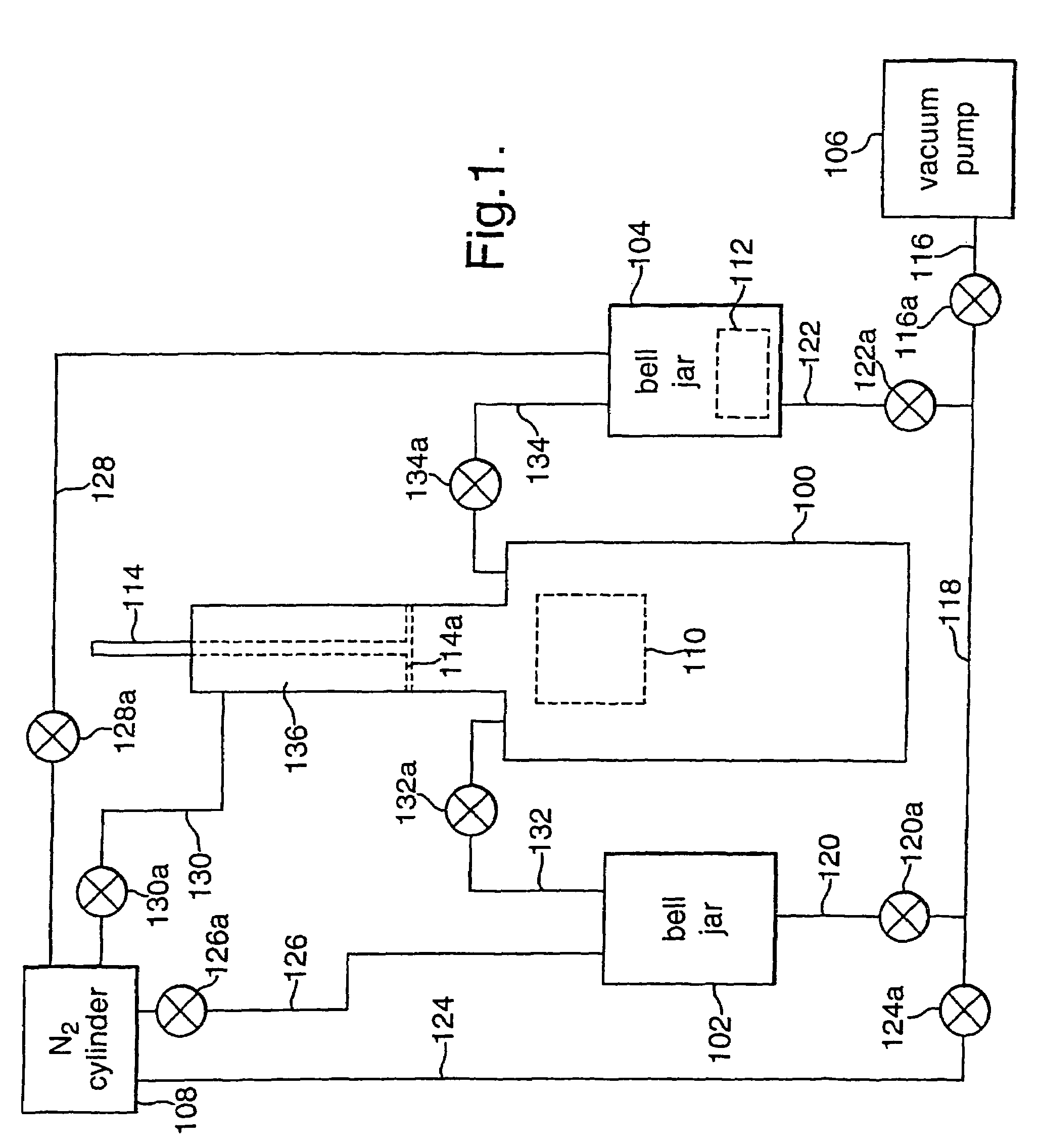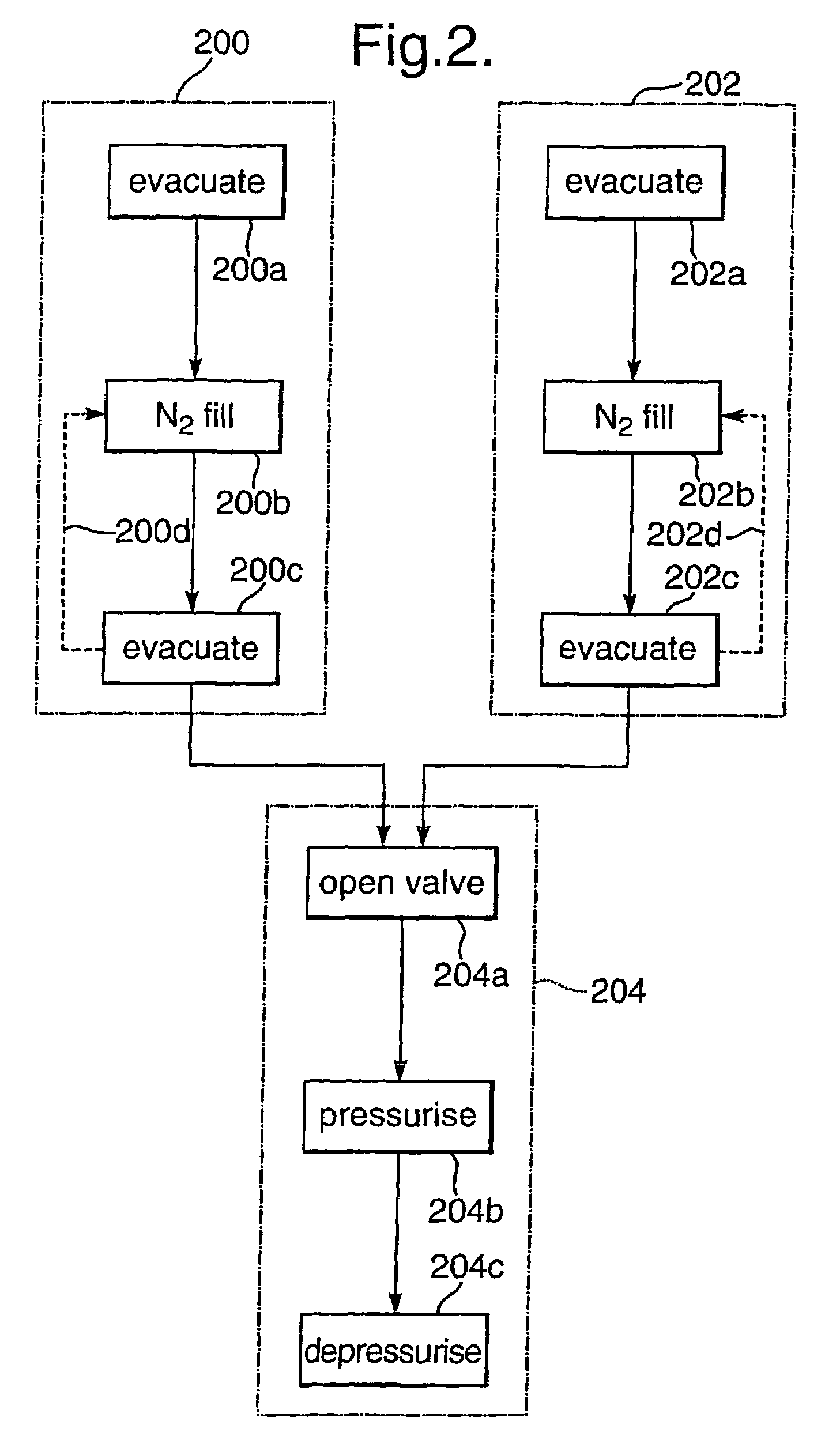Method of potting a component
a technology of potting compounds and components, applied in the field of potting components, can solve the problems of reducing the efficiency of known potting compounds, reducing the efficiency of potting compounds, so as to reduce the pressure and undermine the effect of effectiveness
- Summary
- Abstract
- Description
- Claims
- Application Information
AI Technical Summary
Benefits of technology
Problems solved by technology
Method used
Image
Examples
Embodiment Construction
[0027]As can be seen from FIG. 1, the apparatus shown comprises a pressure vessel 100, a pair of bell jars 102 and 104, a vacuum pump 106 and a nitrogen cylinder 108, all connected through various lines and valves. The component 110 to be potted resides in the pressure vessel 100. The component in this example is an electronic device, although the invention may be used with many other types of components. Initially, the potting compound 112 (10:1 by weight of the component 110) resides in a second pressure vessel, namely the bell jar 104. In this embodiment, the potting compound 112 used was a silicone elastomer, but other potting compounds such as polyesters may be suitable.
[0028]The pressure vessel 100 is provided with a piston 114 operable to change the internal volume of the pressure vessel 100: initially, the piston 114 is positioned in a retracted position to allow a gap of 30 mm in the base of the piston 114 (not illustrated). To ensure the piston 114 remains in the retracted...
PUM
| Property | Measurement | Unit |
|---|---|---|
| pressure | aaaaa | aaaaa |
| pressure | aaaaa | aaaaa |
| pressure | aaaaa | aaaaa |
Abstract
Description
Claims
Application Information
 Login to View More
Login to View More - R&D
- Intellectual Property
- Life Sciences
- Materials
- Tech Scout
- Unparalleled Data Quality
- Higher Quality Content
- 60% Fewer Hallucinations
Browse by: Latest US Patents, China's latest patents, Technical Efficacy Thesaurus, Application Domain, Technology Topic, Popular Technical Reports.
© 2025 PatSnap. All rights reserved.Legal|Privacy policy|Modern Slavery Act Transparency Statement|Sitemap|About US| Contact US: help@patsnap.com



